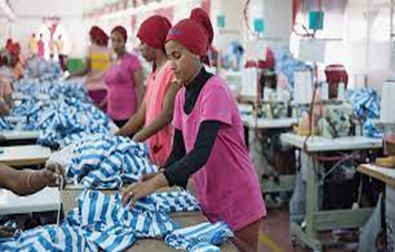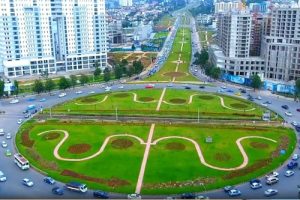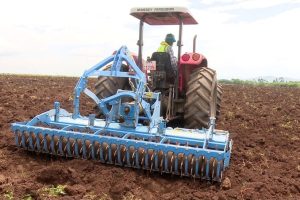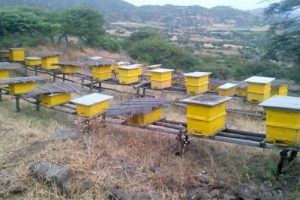
Job creation and economic growth are becoming the common aspects of every undertaking across the nation. Of the myriads of spheres citizens have run in Ethiopia, a number of people are engaged in apparel industry. Ethiopia has an enormous export potential in the textile and garment industry which is annually growing following its rich sources of the production and excessive labor market. As the textile and apparel industries in Ethiopia are consumer based, eco-friendly material is the need of the hour everywhere, and it ensures that the products could be utilized for re-engineering or to produce components of re-fashionable material in every production cycle.
The Ethiopian Herald held talks with Melaku Wolayso, who graduated in industrial engineering and for a certain textile and Garment factory for the last seven years, about the state of apparel industry in Ethiopia and the way forward.
He said, “The Textile and Garment Sector of Ethiopia is attracting foreign investment following the establishment of industrial parks found in different parts of Ethiopia and the industry is positioning itself for massive growth in the future targeting at getting the nation benefited more out of the sector.”
As to Melaku, the apparel industry cuts fabrics and other materials and sews them together to create apparel or accessories, including footwear, outerwear, bloomers, and top-notches, the industry also include lesser-seen knitting mills.
Textile and apparel industries are one of the fastest-growing industries, providing employment to millions, and Ethiopia’s potential would help it become the textile and apparel supplier. These manufacturing units rely on the use of toxic chemicals for processing of textiles, which leads to increased environmental pollution and public concern. This has driven textile manufacturers to adopt environment friendly enzyme-based treatment processes with fungi as the biggest microbial source of these enzymes. Yes, he added the textile is a very lucrative one and even environmental friendly one if managed properly and responsibly.
“The textile and apparel industry is characterized by unpredictable demand, short product life cycles, quick response time, large product variety, and a volatile, inflexible, and complex supply chain structure. In supply chain management, especially in the competitive market environment of the textile and apparel industry, there are a range of styles and approaches to be taken into account.
He further elucidated that product returns, especially in the apparel industry, are characterized by uncertainty and a need for timing and processing.
The textile and apparel industries contribute significantly towards the national economy of Ethiopia and other nations. Although the apparel industry is global in nature, the manufacturing facilities from developed countries are shifting to developing countries to reduce the labor cost. Even in developing countries, the garment industries are facing the greatest challenges in spite of the cheap labor cost, due to the short production life-cycle, high volatility, low predictability, high level of impulse purchase and the quick market response. To reduce the cost of production, the garment industries in developing countries like ours are rather focusing on sourcing of cheaper raw materials and minimizing delivery cost than labor productivity due to the availability of cheap labor.
The local manufacturers are gradually reducing the production and focusing on performing only the entrepreneurial functions involved in apparel manufacturing, which include buying raw materials, designing clothes and accessories, preparing samples and arranging for the production, distribution and marketing of the finished product.
A number of countries such as Bangladesh, Cambodia, Vietnam, Indonesia, Sri Lanka, Pakistan and Honduras have maintained or increased their market shares. In addition to the free-trade policies, the apparel industries are also driven by technical advancements. The use of the Internet has facilitated the buying and selling of clothing and fashion accessories. However, online retailers deal with a high percentage of returns due to poor fit, material quality and customer satisfaction. Interestingly, he said, Ethiopia is well positioned to become the textile and apparel manufacturing hub of Africa, he added.
According to Melaku, Ethiopia has long been considered as one of Africa’s economic wunderkinds. Until recently, it had relative political stability in comparison to other countries on the continent. And, with an average GDP growth rate of 10% in the past decade and a government that instituted policies friendly to foreign investors, the country was able to attract South and East Asian clothing manufacturers.
Following favorable macro and microeconomics factors, Ethiopia’s textile and garment industry had been steadily growing; the country has become one of the largest domestic markets in Africa, given its population size and rapid economic growth. In the country, investors have the right to transfer a capital goods imported with exemption of Custom duties to others party enjoying similar privilege, as far as I am concerned, he opined.
Since Manufacturers are often heard of complaining about the many challenges of doing business in Ethiopia like bureaucratic red tape and logistical hurdles and the problems that come with an unskilled workforce that had no prior experience of working in an industrial settings, the government has to work hard, of course in collaboration with development partners and prime actors, to solve the problems for the sake of smooth flow of the sector.
Besides, foreign investors and the Ethiopian government need to understand that its collapse could have a symbolic knock-on effect in the region—Ethiopia’s garment sector is often seen as a pioneering experiment proving that structural transformation in Africa is possible.
As to Melaku, as garment manufacturers have already been already struggling to do business, the government has been monitoring developments in the nation and has worked with experts of many experience countries to expand the textile industry. In building the new industrial estates, the government is expected to comply with rigorous environmental standards, because both it and manufacturers know that buyers from major fashion brands and consumers alike are placing increasing emphasis on sustainable production. Appropriate certification in areas such as wastewater treatment, emergency exits, accident prevention and fire prevention ensures the industry can compete on regional, continental and even global markets.
“So long as the textile industry has been a major driver of job creation, training should be given to interested and capable ones as it is almost a guarantee of employment. At the national TVET training institute, which trains teachers for all the country’s vocational schools, curricula has been overhauled and improvements made in teaching quality. Though Ethiopia’s economy is growing rapidly and the country has a young population, unemployment has become higher; the government should be keen to create jobs in the textile industry.”
Needless to state, he said the Ethiopian government heavily invested in transitioning from an agriculture-based economy to an industrialized one to attract the private sector, and even Ethiopia has a long history of textile production. Nowadays, it is a booming sector for marketers to conduct sourcing activities in Ethiopia. A range of factors contribute to Ethiopians success as a center for textile production.
Ethiopia has a wide availability of raw materials and the easy access to resources though the sector has not yet been well exploited for the benefit of all citizens, and it has to work a lot to be a modern-day apparel market center, it looks hard but attainable, indeed!, he added.
As to Melaku, Ethiopia’s government wants to diversify exports from an agricultural product to strategic sectors like textile and garment manufacturing. Ethiopia’s long history in textiles began in 1939 when the first garment factory was established. The growth in the textile industry is directly linked to the government’s move to set up an industrial development strategy.
Ethiopia has to continue working on the scheme to get economy grow, and the government should address the multifaceted hurdles in due course of running activities in the sector. True, the long term goal of the nation is to reduce poverty and declare economic sovereignty.
Generally, since Ethiopia is a center of abundant workforce, which comprises a large population and skilled workforce who provide a relatively inexpensive labor force, is situated at a strategic location, home to agricultural development and other related factors, Ethiopia should come at the forefront in terms of seizing the ladder of success and making a difference.
BY MENGESHA AMARE
THE ETHIOPIAN HERALD THURSDAY 1 FEBRUARY 2024





